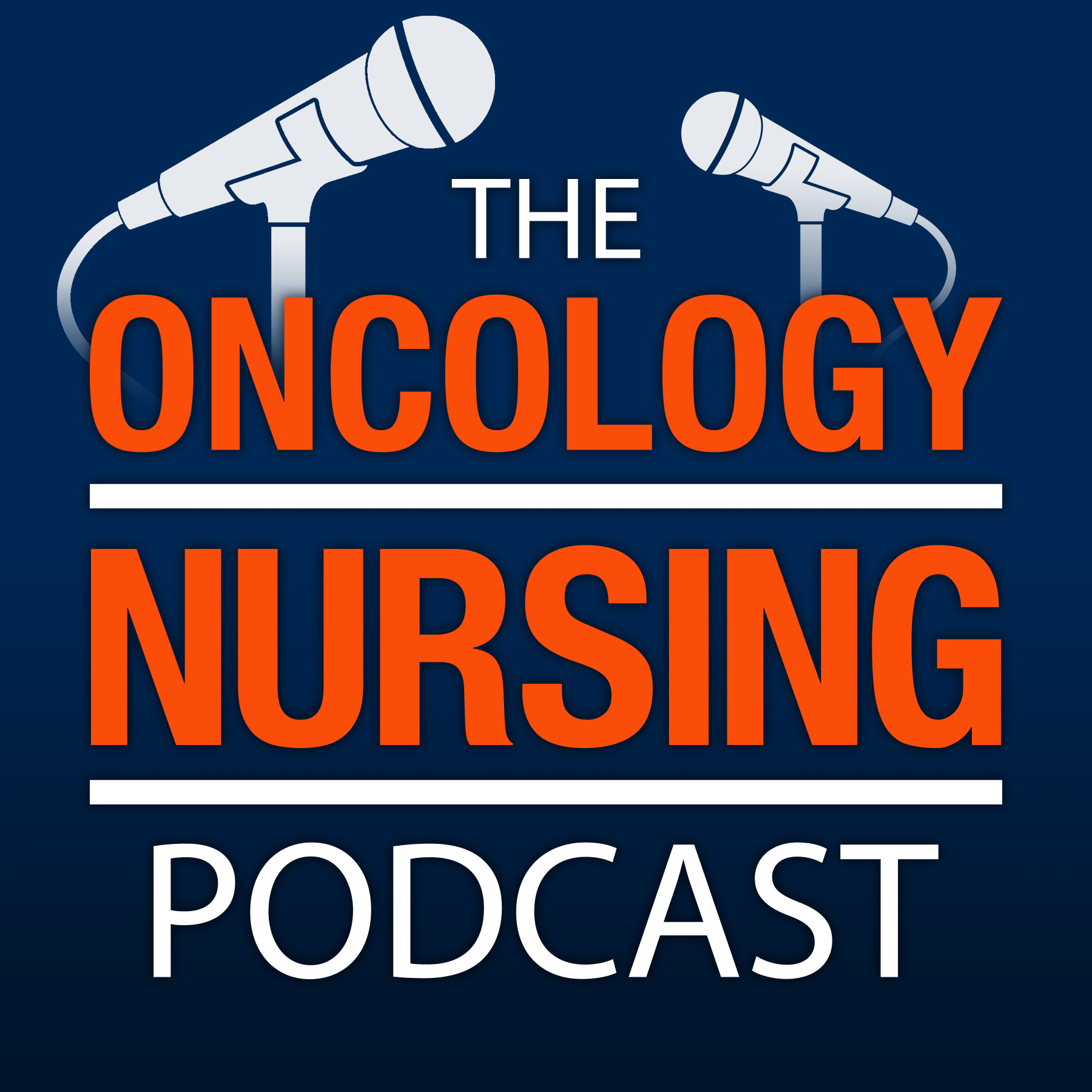Episode 305: Pharmacology 101: Nitrosoureas
Description
“A couple of things I think are really important when you look at this class of drug: It developed by a concerted effort in cancer drug development to look at new agents that would be effective based on the mechanism. And then once they found a drug in this class that was beneficial, they further modified it to try to get better efficacy and less toxicity,” Rowena “Moe” Schwartz, PharmD, BCOP, FHOPA, professor of pharmacy practice at James L. Winkle College of Pharmacy at the University of Cincinnati in Ohio, told Jaime Weimer, MSN, RN, AGCNS-BS, AOCNS®, manager of oncology nursing practice at ONS, during a conversation about the nitrosoureas drug class.
Music Credit: “Fireflies and Stardust” by Kevin MacLeod
Licensed under Creative Commons by Attribution 3.0
Earn 0.5 contact hours of nursing continuing professional development (NCPD) by listening to the full recording and completing an evaluation at myoutcomes.ons.org by March 29, 2026. The planners and faculty for this episode have no relevant financial relationships with ineligible companies to disclose. ONS is accredited as a provider of NCPD by the American Nurses Credentialing Center’s Commission on Accreditation.
Learning outcome: Learners will report an increase in knowledge related to nitrosourea administration.
Episode Notes
Complete this evaluation for free NCPD. Oncology Nursing Podcast episodes: Episode 286: Pharmacology 101: Alkylating Agents Episode 288: Pharmacology 101: Antimetabolites Episode 296: Pharmacology 101: Anthracyclines and Other Antitumor Antibiotics Episode 299: Pharmacology 101: Plant Alkaloids ONS Voice article: The Oncology Nurse’s Role in Oral Anticancer Therapies ONS courses: ONS/ONCC Chemotherapy Immunotherapy Administration Certificate™ ONS Fundamentals of Chemotherapy and Immunotherapy Administration™ ONS books: Chemotherapy and Immunotherapy Guidelines and Recommendations for Practice (second edition) Clinical Guide to Antineoplastic Therapy: A Chemotherapy Handbook (fourth edition) Safe Handling of Hazardous Drugs (fourth edition) Clinical Journal of Oncology Nursing article: Primary Central Nervous System Lymphoma: Treatment and Nursing Management of Immunocompetent Patients Oncology Nursing Forum article: ONS Guidelines™ to Support Patient Adherence to Oral Anticancer Medications ONS Oral Anticancer Medication Learning Library ONS Oral Adherence Video National Institute for Occupational Safety and Health: Hazardous Drugs in Healthcare Settings To discuss the information in this episode with other oncology nurses, visit the ONS Communities.
To find resources for creating an ONS Podcast Club in your chapter or nursing community, visit the ONS Podcast Library.
To provide feedback or otherwise reach ONS about the podcast, email [email protected].
Highlights From This Episode
“With the nitrosoureas, there’s something really interesting because there’s another mechanism that has been identified. And that is that when you put these nitrosoureas in the body, they break down into intermediates, and one of them is an isocyanate. … These isocyanates, what they do is they inhibit DNA repair, therefore have an impact on cells that are damaged. You can think of it as the second mechanism, and people that work in the neuro-oncology space think of this when they think of drugs like lomustine in brain cancer, how that drug decreases the DNA repair protein O6-methylguanine-DNA methyltransferase.” TS 4:11
“These drugs are very lipophilic, meaning they cross the blood-brain barrier. That’s why we use them in brain tumors, so that’s one of the key things. That’s also one of the toxicities we see when drugs cross blood-brain barrier; we see neurotoxicity. So that’s one to at least always consider but also the benefit of it crossing over and being able to treat cancers within the CNS.” TS 8:19
“As a group, these drugs are alkylating agents, so defini
More Episodes
“Under normal conditions, EGFR [epidermal growth factor receptor] is in an auto-inhibited state. And it’s only when it’s needed that it’s upregulated. But when you have cancers that there is either a mutation in the EGFR or an overexpression, what you see is a dysregulation of normal cellular...
Published 11/08/24
Published 11/08/24
Episode 335: Ultrasound-Guided IV Placement in the Oncology Setting
“Much like many experienced oncology nurses, I learned how to do IVs with palpation. I got really good at it. And so I thought, there’s no way I need this ultrasound. But we know now that our patients are sicker. There are...
Published 11/01/24


